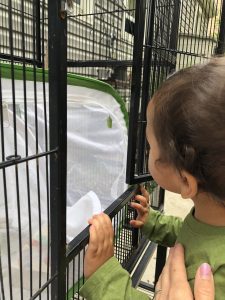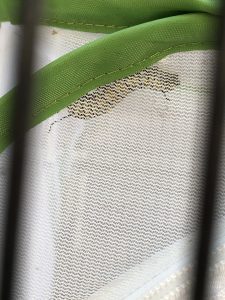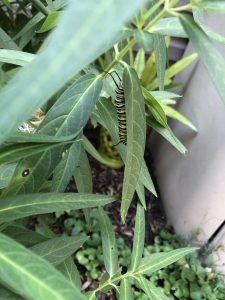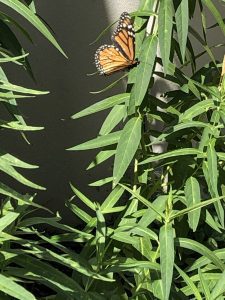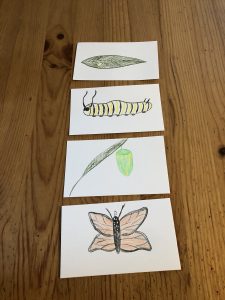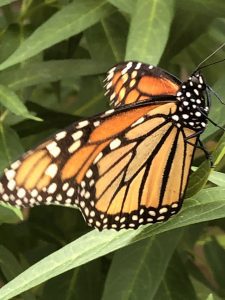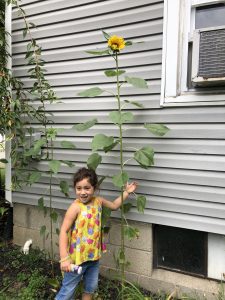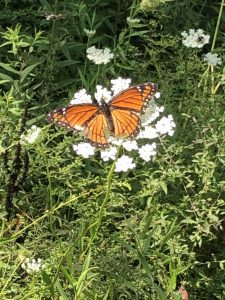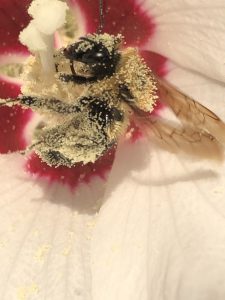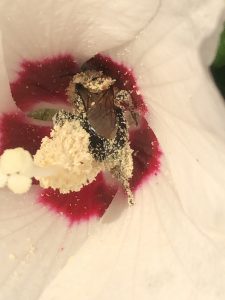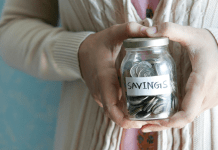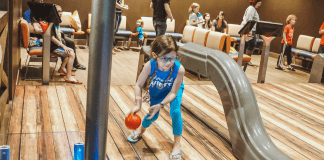As spring approaches, my fair-weather heart is yearning for warm sunshine, picnics with fresh-squeezed lemonade, a lush garden of flowers and my children running barefoot in the grass. After all the snowy fun of winter and aiding toddlers into full snow gear, this momma is ready for the warmer months! One of our favorite spring activities is gardening and with the last frost date at the end of April, we are in planning mode.
Prior to planting outside, we start off several plants indoors in seed starters and place them near a sunny window. This can also be done in a greenhouse or even in a basement with grow lights. Our children love to pick out their favorite vegetables to plant, browsing the seed packets at the grocery store.
Last year, in addition to our regular fruits and veggies that we had grown, we also planted a pollinator garden.

Pollinator gardens are a wonderful way to help the bees, butterflies, moths and even hummingbirds. We planted sunflowers, salvia, lavender, purple coneflowers, Black-eyed Susans, butterfly bush, aster, zinnias, marigolds, cosmos and more. We certainly noticed an increase in pollinators around our house including a variety of bees, butterflies and a fun, little hummingbird moth! Of all the pollinator-friendly plants we planted, our favorite was milkweed.
Milkweed is the only plant that a monarch butterfly will lay her eggs on. The hungry monarch caterpillars munch exclusively on milkweed leaves. I had attended a small meeting about monarch conservation at the end of the winter last year and learned all about milkweed and how it is critical that monarchs have a good supply as their population is drastically decreasing.
Our milkweed grew quickly and we waited eagerly into the summer for caterpillars. One day, we noticed a female monarch laying her eggs onto our milkweed and within a few weeks, we had monarch caterpillars! A dear friend lent us a butterfly cage and we transported every caterpillar we found into the mesh cage to keep them safe from any predators.
Caterpillars can eat a surprising amount of leaves, so every day and sometimes several times a day, we gave our hungry little friends fresh green leaves. When the caterpillars were ready to transform into their chrysalises, they began to crawl to the top of the cage. We waited as long as small children were capable of waiting to see them transform, but missed them all. The kids were excited nonetheless to see what their baby caterpillars had changed into.
Monarch chrysalises are beautiful jade green with gold lines and dots on them; they look like small jewels. As they begin to turn from green to black, you know that the transformation is almost complete. At this point, we brought the butterfly cage inside so that we could closely monitor when they would emerge. Thankful we didn’t miss this transformation and the children all got to see their wrinkly wings hang dry into the beautiful, orange and black design of the monarchs.
All of the monarchs we raised were released but we still saw them fluttering around our garden because of the pollinator garden we had planted.
They enjoyed our zinnias, sunflowers and marigolds the most. One or two of the females laid their eggs on the same milkweed plant they had grown on and we got to watch the cycle unfold all over again!
Milkweed seeds do need to go through the process of stratification, so if you buy milkweed seeds, be sure to read up on this process! We ended up going to a local nursery to find a small milkweed plant to bring home. It is important that the milkweed not be treated with any pesticides or the caterpillars could become sick and die.
Not only is planting a pollinator garden a great way to help pollinators and the environment, it is also a fun and hands-on activity for kids to learn and get a little dirty! I hope you will consider planting some of these beautiful flowers and herbs alongside your strawberries and cucumbers this year. Not only are you helping the pollinators, but they will also help your garden to grow.





